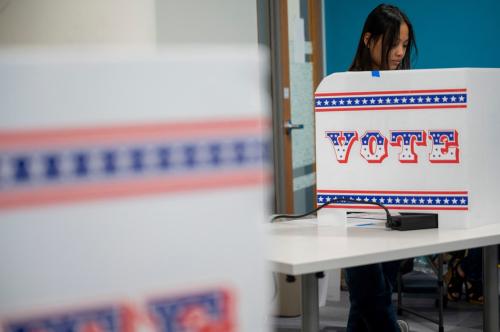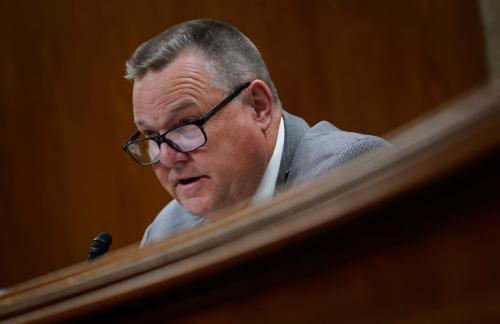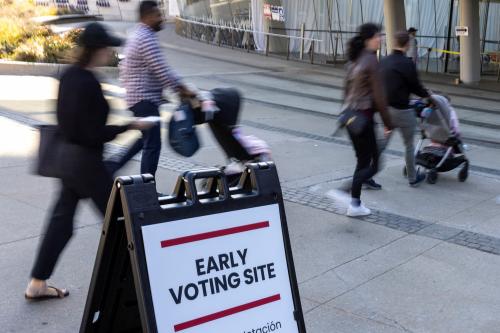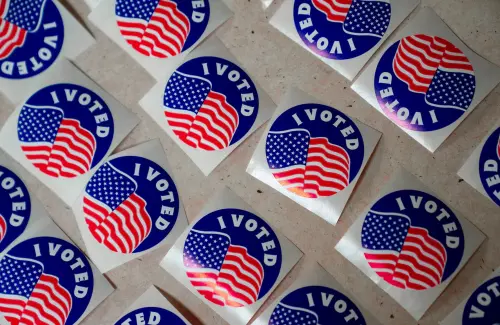With its 16 electoral votes, North Carolina is strategically important for both presidential campaigns. If Donald Trump wins there as well as in Georgia and Pennsylvania, he will have the 270 electoral votes he needs. If he doesn’t, he will need two other states outside his Electoral College base. Kamala Harris could win the presidency by carrying all of the Blue Wall states. But if she loses one of them, then North Carolina offers her the most likely route to victory, because Georgia and Arizona are leaning increasingly toward Trump in the election’s waning days.1
Of the seven swing states this year, North Carolina is the most puzzling. It is the only swing state that Donald Trump carried in 2020 while losing the national popular vote by 4.4 points. He received 49.9% of the state’s popular vote, compared to 46.9% nationally, while Biden underperformed his national share by 2.7 points in North Carolina, garnering only 48.6%. In short, Trump ran nearly six points ahead of his national showing in the Tar Heel State.
Because Trump is much more competitive in the national popular vote and in the swing states this year, he would be expected to be well out in front in North Carolina. But he isn’t. All the poll aggregates show him with a lead of at most one point, not much better than he is performing nationally.
We have good reason to believe that both campaign’s internal polls are consistent with the public polls. Candidates’ time is scarce and precious in the closing days of a presidential election. But both candidates have spent a lot of time in the state; on October 30, both candidates visited North Carolina yet again.
So why is North Carolina, a state that Trump should be leading comfortably and that Democratic presidential candidates have carried only twice in the past half century, in play this year?
Since 2020, North Carolina’s population has increased by nearly 400,000, behind only Texas and Florida, so one hypothesis is that the state’s rapid population growth has shifted the political balance in the Democrats’ favor. But the voter registration statistics tell the opposite story. Since 2020, the number of Democrats registered to vote has fallen by 168,000 while the number of registered Republicans has risen by 118,000, cutting the Democrats’ edge from almost 400,000 in 2020 to just 113,000 now.
Another plausible hypothesis is a pro-Harris mobilization of the state’s Black voters, who make up nearly one-quarter of the state’s electorate. Again, the data we have so far goes in the other direction. In 2020, Trump received only seven percent of the Black vote. This year, according to the polls, his share is likely to more than double.
A third hypothesis: Traditional Republicans could no longer stomach Donald Trump and are breaking ranks to support Harris. Again, plausible but incompatible with the evidence to date. Trump is receiving about 95% of the Republican vote this year, as he did four years ago.
The most plausible hypothesis of all: A massive outpouring of women angered by the Dobbs decision overturning Roe v. Wade. But in North Carolina, the opposite seems to be the case. According to several well-regarded polls, Harris is only breaking even with Trump among women. (Conversely, Trump’s edge among men is remarkably small.)
The evidence we have so far supports only one conclusion: Trump’s lead in North Carolina is smaller than expected because he is performing significantly worse among white voters than he did four years ago. According to the 2020 exit polls, Trump beat Biden by 66% to 33% in this group, which makes up nearly two-thirds of the state’s electorate. This year, his share of the white vote is down to 58% while Harris is receiving about 40%.
If Marist’s recent North Carolina poll is accurate, this trend stretches across the much-discussed education gap in white America. Harris’ share of whites without college degrees is 29%, compared to Biden’s 21%. Four years ago, Biden got the support of only 50% of whites with college degrees, but Harris’ share stands at 61%.
It is possible that when the votes are counted, the North Carolina puzzle will disappear, and that Trump’s performance will be consistent with both history and his overall national vote. But if the discrepancy persists through Election Day, analysts will be asking why so many white North Carolinians deserted the nominee of the party that almost always wins the state.
-
Footnotes
- To be precise, North Carolina would be enough to compensate for the loss of either Wisconsin or Michigan. If Harris lost Pennsylvania, however, she would have to win Nevada as well as North Carolina.
The Brookings Institution is committed to quality, independence, and impact.
We are supported by a diverse array of funders. In line with our values and policies, each Brookings publication represents the sole views of its author(s).








Commentary
Will North Carolina be the big surprise on Election Day?
October 31, 2024